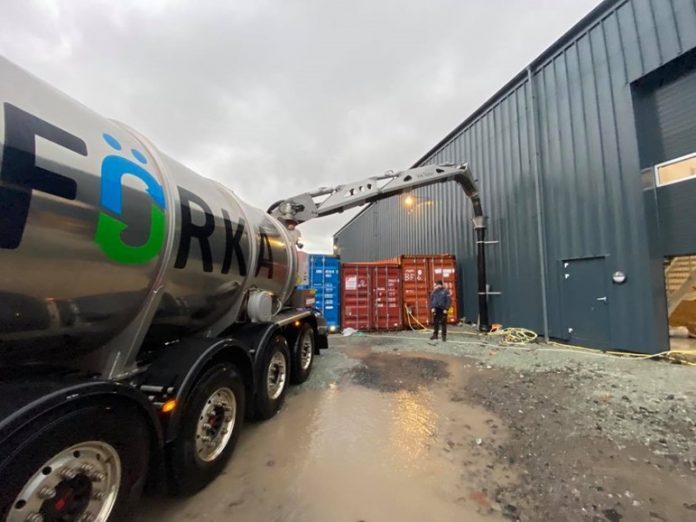Bio-organic waste from Faroese salmon farmer’s new biogas facility to power 225 households.
In a press release, Bakkafrost reports that its biogas facility FÖRKA is starting production. Last Friday a special equipped truck arrived at the Strond hatchery to pick up bio-organic residual waste from the production. The biological waste was transported to Bakkafrost’s biogas facility FÖRKA, where it will be used to make green energy on the North Atlantic archipelago.
The total production (10.000 m3) of green energy of biological waste from Bakkafrost’s biggest hatchery at Strond is expected to be 1,120 MWh a year, equivalent to the annual electricity use of 225 households.
“This is a huge step towards our goal to utilize all material from our salmon production. We are privileged to be among the first movers in the Faroe Islands to use biological waste to produce green energy,” said Rógvi Jacobsen, operations manager at the Strond hatchery.
Lately, the employees at FÖRKA have been preparing different equipment to ensure a safe handling of the biological waste. A disinfection system has been developed for the truck to make it capable of transporting bio-organic manure.
“At FÖRKA, we have a truck that is special equipped for transporting biological waste from the Strond hatchery to FÖRKA. We have developed a disinfection system to disinfect the truck to ensure that no salmon-related diseases are spread when the truck transports the bio-organic manure to the farmers. When green energy is produced of the biological waste, the leftovers are used for bio-organic manure, which contains valuable nutrients, which are used for manuring in different parts of the country. For agriculture this means reduced consumption of imported fertilizers,” said FÖRKA operations manager Fróði Mortensen.
Besides producing energy of the biological waste of the farming operations of Bakkafrost, FÖRKA produces energy from cow manure from farmers throughout the country. In November FÖRKA produced 212 MWh, equivalent to the monthly use of 510 households.
The goal is to produce heating for 400 homes and electricity for 1,900 houses.











